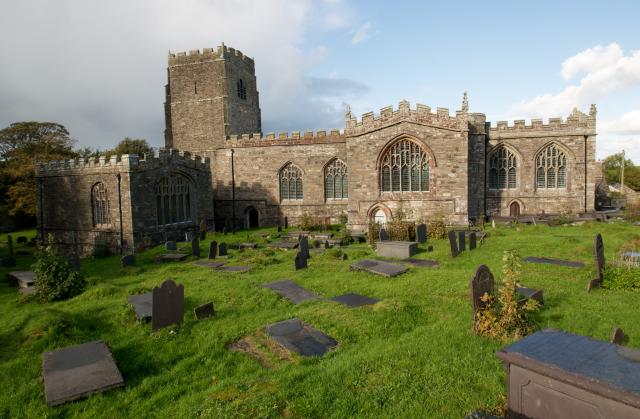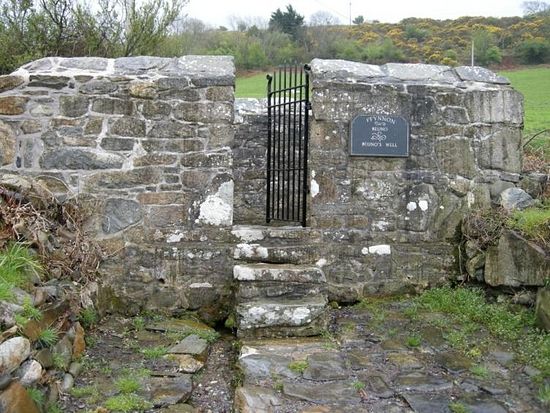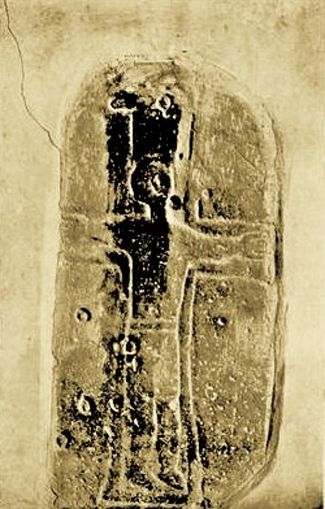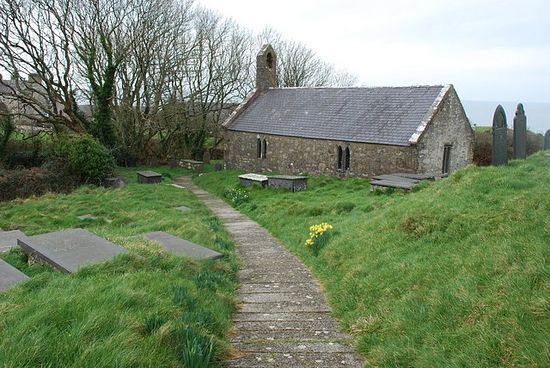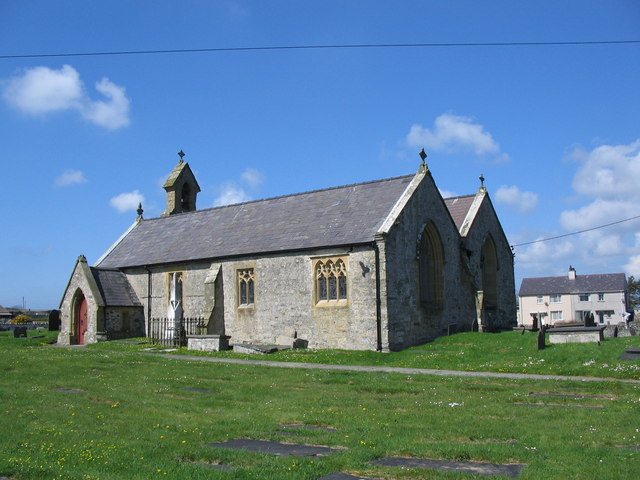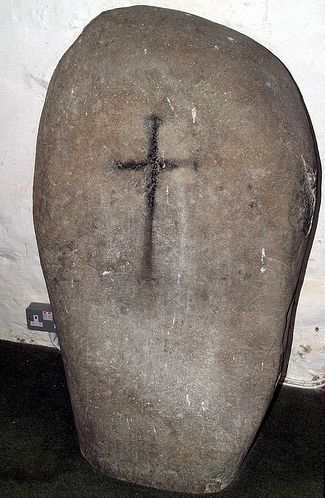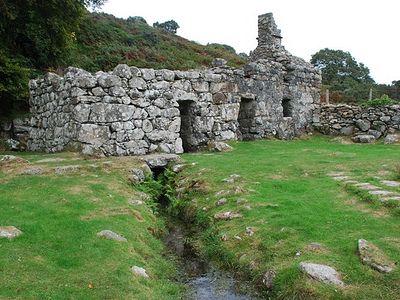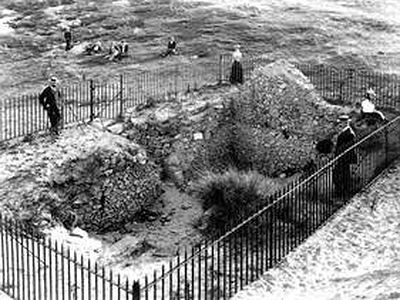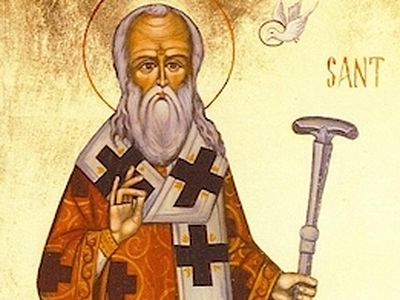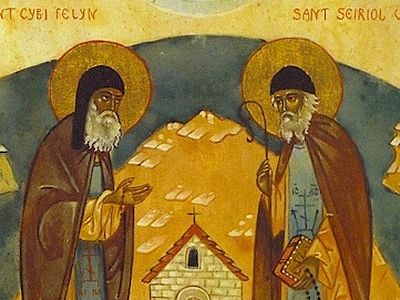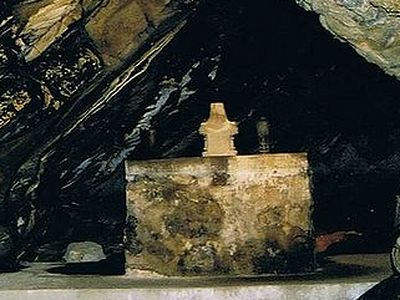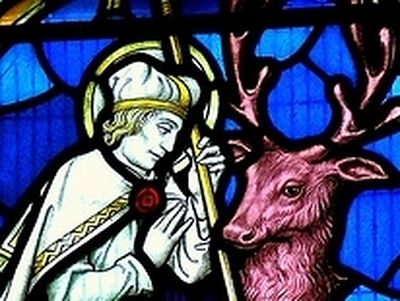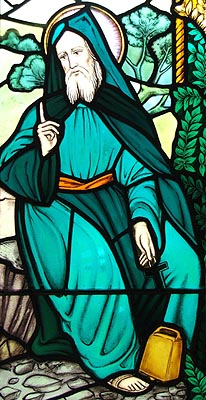 A stained glass image of St. Beuno.
A stained glass image of St. Beuno.
In about 616 Beuno founded his main monastery at Clynnog Fawr in the historic region and modern county of Gwynedd in northwest Wales. Owing to the tireless labors of the monks of Clynnog Fawr, most of North Wales was enlightened with the Gospel. Beuno was ordained priest at Bangor and then was invited to become its abbot. In all the venerable man established no fewer than nine monastic centers in Wales and all of them became famous. According to popular tradition, Beuno was the uncle, spiritual father and patron of the holy martyr Winifred, whose veneration throughout the Middle Ages was great. Her relics were in Shrewsbury in England and her wonder-working well at Holywell in Wales has been a focus for continual pilgrimages for 1350 years.
It was said of Beuno that he was stern with stubborn sinners but was full of mercy and compassion for penitents and those who suffered. Towards the end of his life, Beuno was rewarded by the Lord with the gift of discernment and was able to penetrate into the depths and mysteries of the spiritual world. Throughout his life, Beuno worked numerous miracles of healing. He was also a very active and extremely successful missionary, his preaching of the Word of God reached many corners of Wales and south-west England. Among the contemporary theologians Beuno was famous for his knowledge of the Holy Scriptures.
The saint reposed peacefully a few days after Easter Sunday 640 (or 645) in Clynnog Fawr as a very old man. For most of his very long and fruitful life this holy man had wandered much, everywhere preaching the words of Eternal Life, founding monasteries, healing the sick and consoling the destitute, the suffering and those who had been forsaken by others. Frequently he retired to very secluded places for solitary prayer. Beuno established monasteries in Llanveynoe in Herefordshire in England (the Welsh form: Llanfeuno, “Church of Beuno”) and in Llanymynech. To this day there is a unique village called Llanymynech which is partly situated in Wales (Powys) and partly in England (Shropshire). Ancient traditions say that Beuno, as a wandering preacher, used to pay visits to the monastic islands in Wales at Bardsey and Anglesey. On Anglesey he may have founded a church, or, most likely, a monastery, in a place called Aberffraw.
Apparently Beuno for some while led a solitary ascetic life in Somerset in southwest England where a tiny and lovely church in Culbone – which stands to this day – served him as a cell (hence its name: cell = kill = killbeuno = Culbone). This is the smallest active parish church in all England. It is dedicated to St. Beuno who has been its patron for many centuries. This is a fine example (as well as the neighboring early English Church of St. Dubricius in Porlock) of an early hidden Celtic shrine in England and indicates the uninterrupted tradition of holiness. It is believed that it served Beuno as a cell and after his repose was converted into a chapel. Culbone church is located in a very quiet and remote place right beside the Bristol Channel, surrounded by nature, forest, pastures and small farms. Nearby is the steep Porlock hill and other high hills (typical for Somerset). The views are breathtaking and as you walk it seems that the sea merges with the sky and worldly civilization is far away. This is a typical setting for the ancient Celtic saints.
After his repose, Beuno was buried in Clynnog Fawr, and soon a chapel was erected above his grave. A great number of miracles occurred at his holy relics. Later the saint’s remains were translated to a new church where many miracles continued to occur. The veneration for Beuno was so strong that it even continued after the disastrous Reformation under Henry VIII, when all over Britain monasteries were closed, icons, relics and other holy objects were destroyed and the veneration of saints was officially prohibited.
Until the early 19th century there was a custom among the farmers in the vicinity of Clynnog Fawr to make donations to St. Beuno’s Church in the form of young lambs and calves on the feast of Whitsun (Trinity Sunday), as well as to lead sick cattle to the neighboring holy well dedicated to St. Beuno. There are records of countless cases of healing of sick domestic animals on that holy site. From the late medieval era, Clynnog Fawr church regularly celebrated a special service of intercession for the health of livestock. Children who suffered from many diseases – both before and after the Reformation – were brought and led to the holy well, bathed in it and left for a night inside the chapel on the grave or near the grave of the holy man; and many of them were miraculously cured. In most cases children and young people who had suffered from rickets and epilepsy left this place absolutely healthy.
There is written evidence that in the 18th, 19th and 20th centuries people were healed from many ailments on bathing in this sacred spring. St. Beuno is considered to be the patron of sick children and sick cattle in Wales to this day. Beuno’s well at Clynnog Fawr still remains a destination for pilgrimages today, even though it was partly damaged by vandals in 2010. There is another holy well dedicated to Beuno in Holywell, Flintshire, situated close to its far more famous neighbor – the well of Beuno’s niece St. Winifred. From this well there begins a heritage route devoted to St. Beuno. There is an ancient and now unused church of St. Beuno and a well associated with him at the foot of a hill in the village Carnguwch, Gwynedd.
Early in the 20th century archaeologists discovered the remains of the original chapel where relics of St Beuno had been kept. Many churches are dedicated to this saint. This demonstrates that St. Beuno and his disciples built a large number of churches and monasteries in various districts of Wales and in the border areas of England. The majority of churches that bear his name can be found in northern and northwestern Wales, including on the Isle of Anglesey and in the Lleyn Peninsula. Churches dedicated to the holy man can also be found in central, eastern Wales and in the historic Clwyd region. The ancient church in the village of Llanveynoe in Herefordshire, England, is dedicated to St. Beuno and St. Peter. It stands precisely on the site of the original monastery built by the saint himself. Some researchers think that this site marks the saint’s birthplace. The church boasts two early English crosses from the 9th-10th centuries, which are somehow connected with the saint.
The church in Clynnog Fawr (this village is often called simply “Clynnog”) is still dedicated to Beuno. This village stands on the northern coast of the Lleyn Peninsula in Gwynedd. As was said, here early in the 7th century Beuno founded his most famous monastery, which was to become a great center of monasticism and pilgrimages. Numerous pilgrims gave this church generous donations. In the 10th century, Clynnog monastery was burned to the ground by the Vikings, and in the following century, after restoration, it was again completely demolished, this time by the Normans. The abbey church, however, continued to exist throughout the centuries. Among the relics of this large and very old church is the ancient stone of St. Beuno with a cross containing marks that are believed to have been left by the fingers of the saint himself! The sundials on the exterior side of the church may date to as early as the 10th century.
The 19th century church in the village of Berriew in the Welsh county of Powys is dedicated to St. Beuno. The original church on this site was built much earlier. According to some traditions, the saint was either born there or else he built a church here. On the southwest coast of Anglesey there is a small and pretty village called Aberffraw which used to be the capital of the old Welsh kingdom of Gwynedd. The local church bears the name of Beuno commemorating the fact that he established a monastery here that once was renowned. There are many other picturesque rural churches scattered throughout Wales and dedicated to St. Beuno; they reputedly stand either on the sites of his cells or were originally founded by him. Among these lovely churches we can mention those in Penmorfa (Gwynedd), Pistyll (Gwynedd: situated on the ancient pilgrimage path to Bardsey), and Trefdraeth (Anglesey).
The village of Culbone consists of just a handful of cottages and is situated near Porlock Bay in a an area of rare beauty. The cliffs above the Bristol Channel near the village reach 1200 feet; a small spring flows down the cliff to the sea forming a picturesque cascade. Culbone church is a tiny and presumably the smallest stone construction in the Kingdom, measuring some 35 feet long by 12 feet wide, and seats about 16 people. This moving and diminutive church consists of a sanctuary, a nave, and a porch, and has a small spire. The present fabric of the church dates approximately from the 12th-13th centuries though the first building was pre-Norman. It is difficult to ascertain to whom this church was originally dedicated—to St. Columba the Virgin-Martyr, to St. Columba of Iona, to St. Bean or to St. Beuno. Despite the fact that this place is difficult to access and there is no road and no parking near the church, services are celebrated in it regularly. Some of St. Beuno’s relics may rest under this building as well.
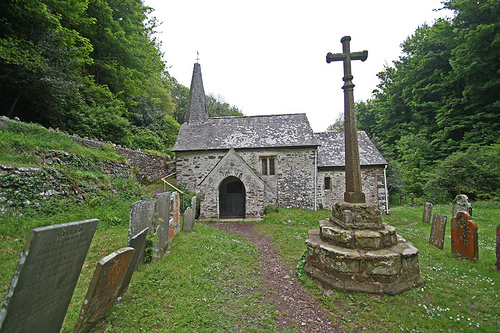 St. Beuno's Church in Culbone, Somerset (the smallest parish church in all England).
St. Beuno's Church in Culbone, Somerset (the smallest parish church in all England).
Holy Father Beuno, pray to God for us!
